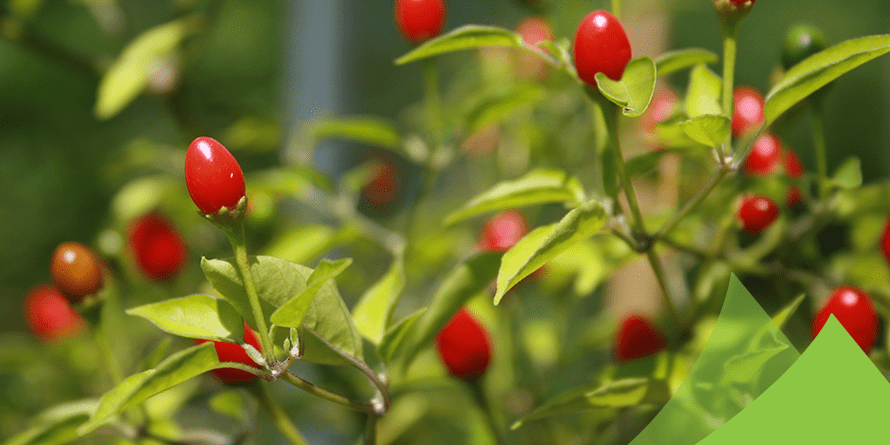
About Hot Peppers
Common Name: Peppers, hot, Chiltepin (Capsicum annuum)
Seed Saving Level: Easy—self-pollinating
Planting
Sow seeds inside February 15–March 15 or July and then plant them outdoors or into a large pot in April–May or August.
Growing chiltepines from seed can be difficult. They are wild plants commonly found under the cover of leguminous nurse plants like mesquite. They do best when those conditions are replicated. They prefer shade and are frost sensitive. In the wild, the chiltepines depend upon birds to scarify the seed by allowing it to pass through their digestive system; the hard outer covering of the seed is broken down so water can enter. To successfully germinate the seeds, you can scarify the seed yourself in order to facilitate the seed’s ability to absorb water. Keeping the seeds well-watered may also be sufficient. It’s best to sow seeds inside until they strong enough to be transplanted outdoors.
Harvesting
Usually in mid-October.
Seed Saving
Flowers are perfect and self-pollinating. Seeds are ready to harvest when fruit is fully mature. Cut open and extract seeds. Make sure to wear gloves as chili oil is very pungent and will remain on unprotected fingers even after washing. Touching your face can cause extreme discomfort. Rinse and place seeds onto paper or a kitchen towel (away from sunlight) until dry and brittle, for about 2 weeks. No cleaning necessary.
Sources
- Seedswap (2013) by Josie Jeffery
- Seed to Seed: Seed Saving and Growing Techniques for Vegetable Gardeners (2002) by Suzanne Ashworth
- Bill Steen, Edible Baja (Sep/Oct 2013) “Chiltepin Crush”
Books
Link
Recipe: Basic Chiltepin Salsa
This recipe is what you might call middle of the road, one that will not scorch your mouth when eaten and that will be enjoyed by most.
Ingredients
- 2 tbsp of chiltepines
- 2 medium tomatoes
- 1 or 2 cloves of garlic
- 1 tbsp of vinegar (rice vinegar is nice although in Sonora apple cider vinegar is common)
- 1 tsp of crushed Mexican oregano
- 1 tsp of salt
- 1-3 tbls chopped cilantro (optional)
- water, depending on water content of tomatoes
Instructions
Remove the center core of a tomato and boil it with the garlic and Mexican oregano. When the tomato has softened, remove the skin. Another option is to blacken the tomato in the oven or on the grill instead of boiling.
Toast the chiltepines lightly on the stove top, being careful not to burn as it will turn them bitter. Blend all the ingredients, adding some of the cooking water as needed until the desired consistency is achieved. Finally, add the vinegar, salt, and chopped cilantro.
Source: Bill Steen, Edible Baja (Sep/Oct 2013) “Chiltepin Crush”


